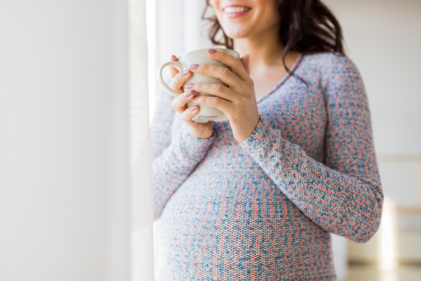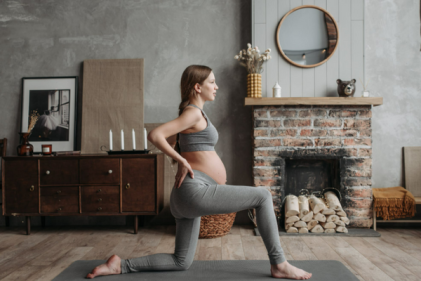
Symptoms of Pelvic Pain
Pelvic pain very often presents during the ante/post natal period. If managed well however it doesn’t have to ruin your pregnancy, or the early days with your baby. Below are some of the common signs and symptoms and some simple advice to follow at home.
Pelvic pain commonly affects the following areas:
- Lower back and/or back of the pelvis
- One or both hips
- The lower abdominal/groin areas
- The joint between the legs which is called the Symphysis Pubis Joint. Pain that affects this joint has historically been known as SPD (Symphysis Pubis Dysfunction).
Moving from one position to another (e.g. turning in bed) or shifting weight between one side and the other (e.g. climbing stairs) can often be a source of pain. Pelvic pain will generally increase with aggravating activities and will usually be better with rest. If the pain is constant and doesn’t improve with rest and or prevents you sleeping it is important you discuss this with your Doctor.
Causes of Pelvic Pain
Pelvic pain during pregnancy may occur as a result of the following:
- Increased levels of pregnancy hormones- The hormone relaxin circulates throughout the body during pregnancy. As its name suggests, this hormone relaxes the ligaments that hold the pelvis together. (Research has show that women with pelvic pain are usually found to have the same levels of the hormone relaxin as women without pelvic pain, however some women may be more sensitive to the hormone).
- A change to bone density - bone density decreases during pregnancy. (Research has shown however, doesn’t link these changes in bone density with an increased risk of back or pelvic pain).
- Asymmetric laxity - That is when the ligaments in one side of the pelvis are more relaxed than the other side causing an imbalance between the joints.
- Less movement or more movement than normal in the joints of the hips and lower back - This can place strain on the pelvic joints.
- Weak muscles – In particular the deep abdominal muscles and/or pelvic floor. These muscles when working properly help to stabilise the pelvis
- Other causes like infection, scar tissue, bowel and gynaelogical problems can also send pain to the pelvis and should be ruled out.
What to do if you experience Pelvic Pain
If you suspect you have pelvic pain it is important to get a proper diagnosis as early as possible. Symptoms that are treated early during a pregnancy can save a lot of problems in late pregnancy/post natal period. Initially inform your primary carer such as your GP or consultant.
For a full pelvic assessment seek a Chartered Physiotherapist, or registered Osteopath, ideally with experience and post graduate qualifications in Women’s Health. Some women get pain relief using acupuncture, but again, seek a fully qualified acupuncturist with a clinical interest in pregnancy related pelvic pain.
Simple self-management techniques
- The use of ice applied locally can be soothing and will help reduce inflammation, particularly to the symphysis pubis joint. A bag of frozen peas wrapped in a towel will suffice for this.
- Choose sensible footwear that supports the foot when walking- avoid the ballet pumps and opt for a good trainer!
- Minimise the activities that cause pain. If walking causes pain, stop and try a different form of exercise like gentle exercise in the pool or modified ante natal Pilates, or yoga (make sure your instructor has experience dealing with pelvic pain).
- Take any help that is offered. If you have someone offering to help with housework, take it!
- The use of a pelvic belt can be useful to some patients in relieving pain. These belts can be effective when used during the activities that bring on the pain. Check with the Chartered Physiotherapist in your local maternity department, as the hospital can sometimes provide these to patients.
- Try to engage your pelvic floor muscles during activities that you know cause pain.
- Managing your symptoms is an important part of dealing with pelvic pain. Do more of the things that reduce the pain and less of the things that bring on the pain!
Moving forward
If you have experienced pelvic pain during a pregnancy make sure you let your midwife know. The midwife can help you find comfortable positions during labour.
Immediately after delivery, try and avoid activities that caused pain through the pregnancy. Aim for a gradual reintroduction of activity. Be careful of overdoing things in the very early days, as any pain relief medication you may be taking could be masking any pelvic problems.
If after a couple of weeks your pain hasn’t subsided, or has increased, speak to your GP or Physiotherapist as further investigation may be required.
Many women who suffer from pelvic girdle pain in one pregnancy worry about getting pregnant again. However getting yourself fit and strong between pregnancies may reduce the chances of pelvic girdle pain in subsequent pregnancies.
Useful websites
www.findaphysio.ie
www.pelvicpartnership.org.uk
www.acpwh.csp.org.uk
Miriam Rowlands
Chartered Physiotherapist & Clinical Pilates Instructor at Physio South East







